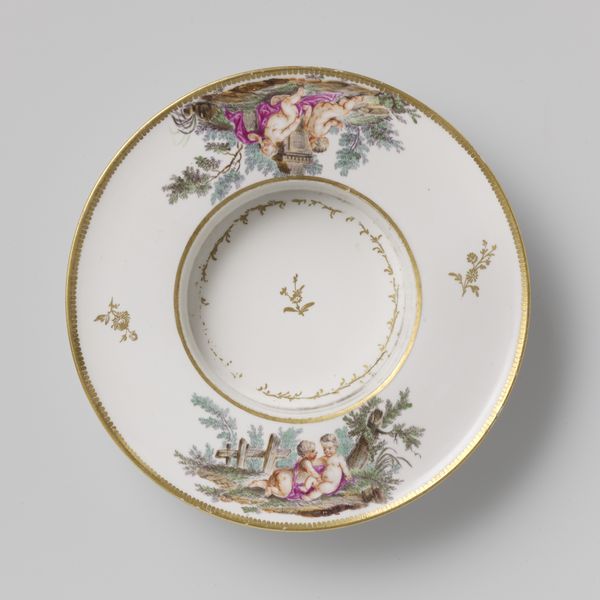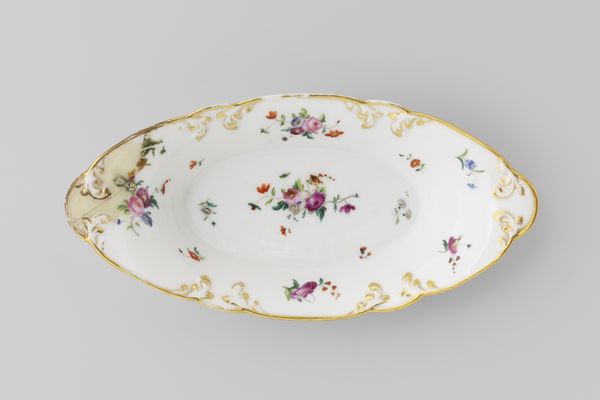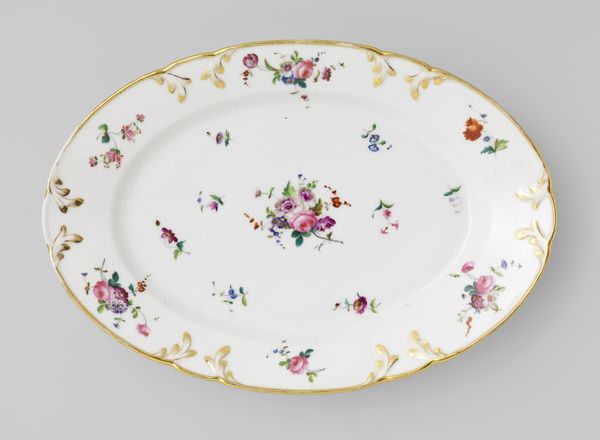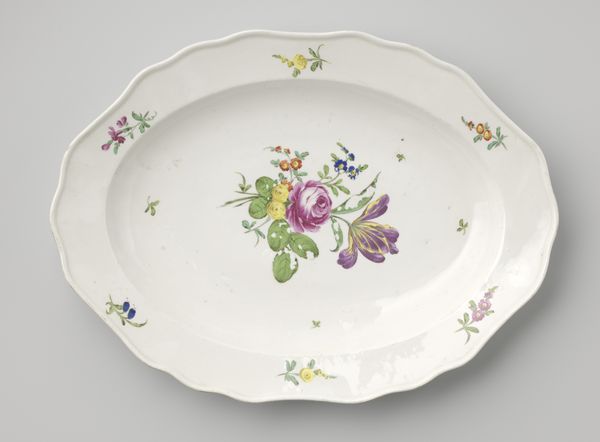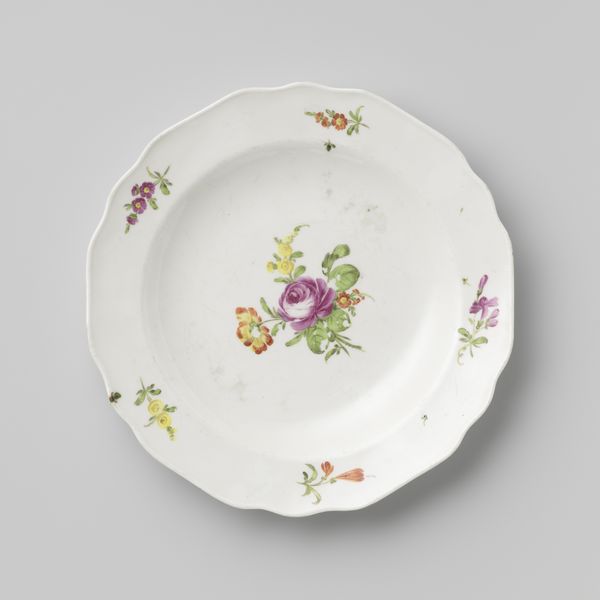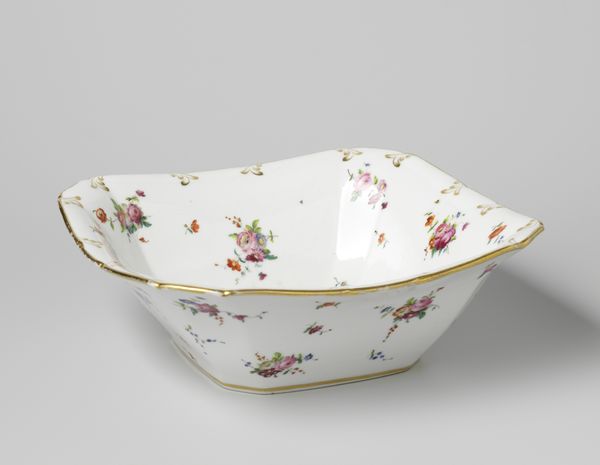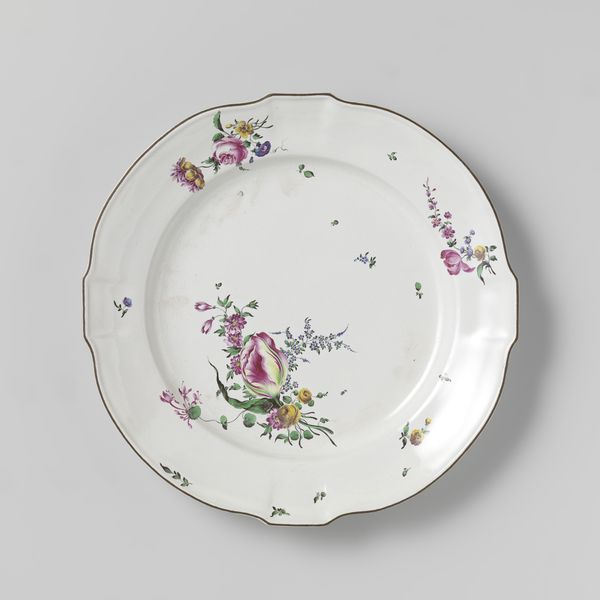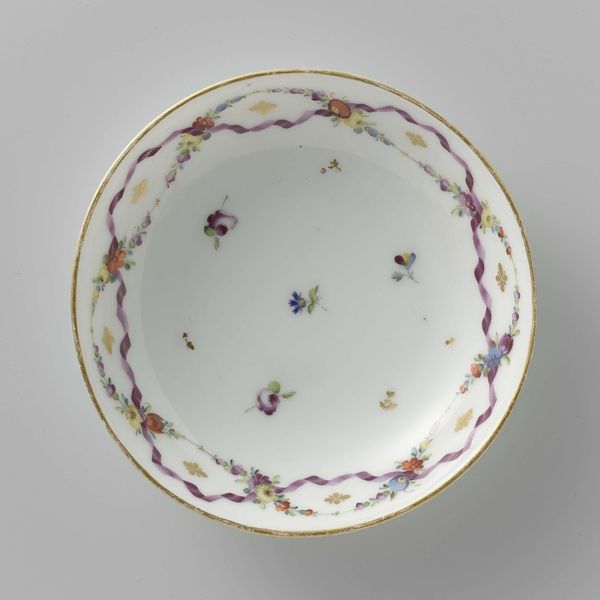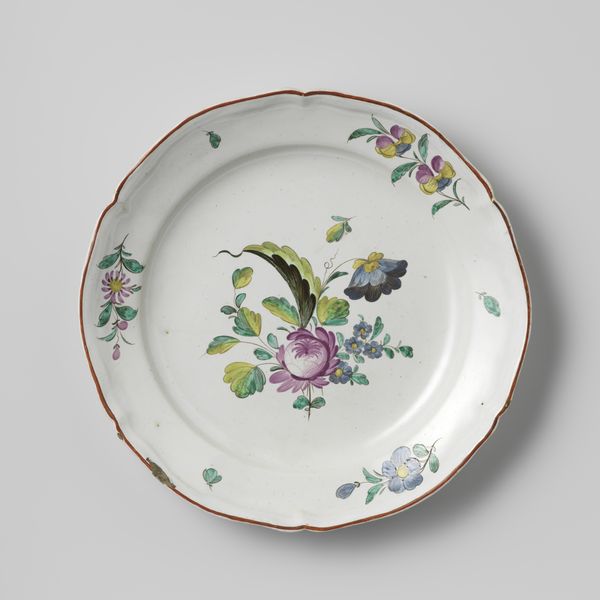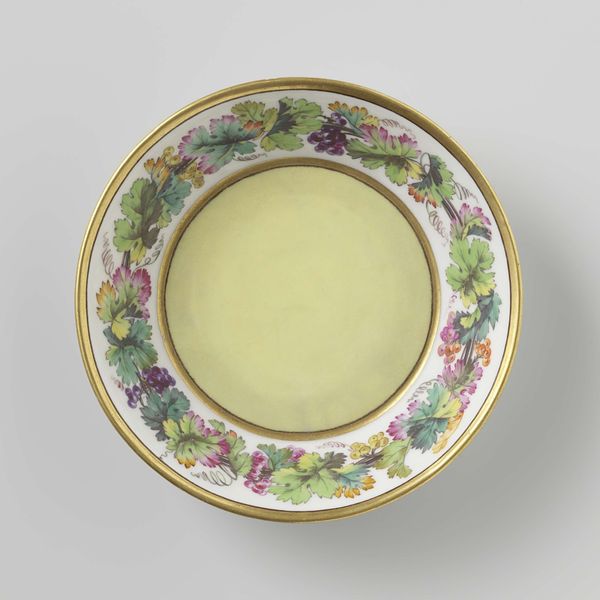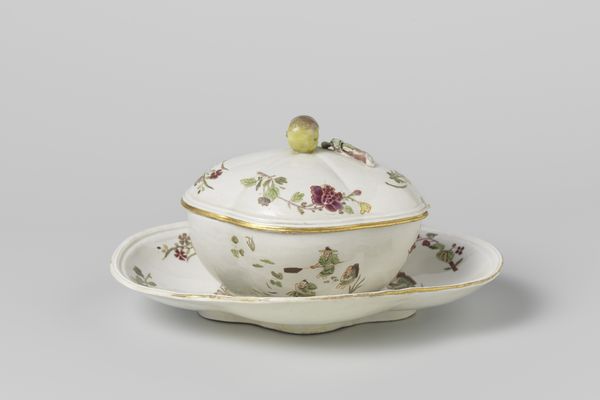
ceramic, earthenware
#
ceramic
#
earthenware
#
stoneware
#
ceramic
#
decorative-art
Copyright: Rijks Museum: Open Domain
Curator: Here we see "Servies, enkele onderdelen," or "Service, some parts," from circa 1880, housed here at the Rijksmuseum. These decorative ceramic earthenware pieces were produced by De Porceleijne Fles, and their striking blue and white glaze work instantly creates a sense of… precision. Editor: Yes, precision and a deep well of history. Looking at the repetitive floral patterns, it almost feels like the tableware is telegraphing a particular sense of 19th-century European domesticity and perhaps the colonial ambitions woven into its production and use. It makes me think about access and privilege, you know? Curator: Absolutely, this style draws so heavily on traditions of Delftware. The colors carry immediate associations with purity and value, mimicking fine porcelain yet made of more humble earthenware. Think about how this type of visual vocabulary permeated domestic settings, acting as a constant reminder of status and perhaps a yearning for refinement. The imagery also speaks of deeper trade relationships... these blue dyes, after all, didn't originate in Europe. Editor: Precisely, those cobalt pigments likely travelled quite a distance. So we see echoes here – a yearning for something delicate, something refined. Porcelain served a specific social function then; by mimicking it on earthenware, a larger population could get closer to an upper-class fantasy, literally eating and drinking their way toward social aspirations. It makes me think about performativity and how material objects reinforce or blur the lines of class. Curator: That's so insightful. And it prompts a thought: These forms are repeated again and again across cultures, and perhaps reflect underlying collective beliefs. Are there cross-cultural associations with floral patterning on tableware that link luxury with…abundance, beauty, nature’s bounty? Editor: That’s it! A universal symbolism. Floral designs have long been tied to representations of growth, abundance, even paradise across different cultures. It really adds another dimension when looking at something seemingly so everyday, doesn’t it? Curator: It truly does, allowing us to see beyond mere utility into the layered meanings these objects have accrued over time. Editor: Yes, art is rarely just art. Everyday objects offer a glimpse into the bigger systems and power dynamics around us.
Comments
No comments
Be the first to comment and join the conversation on the ultimate creative platform.


